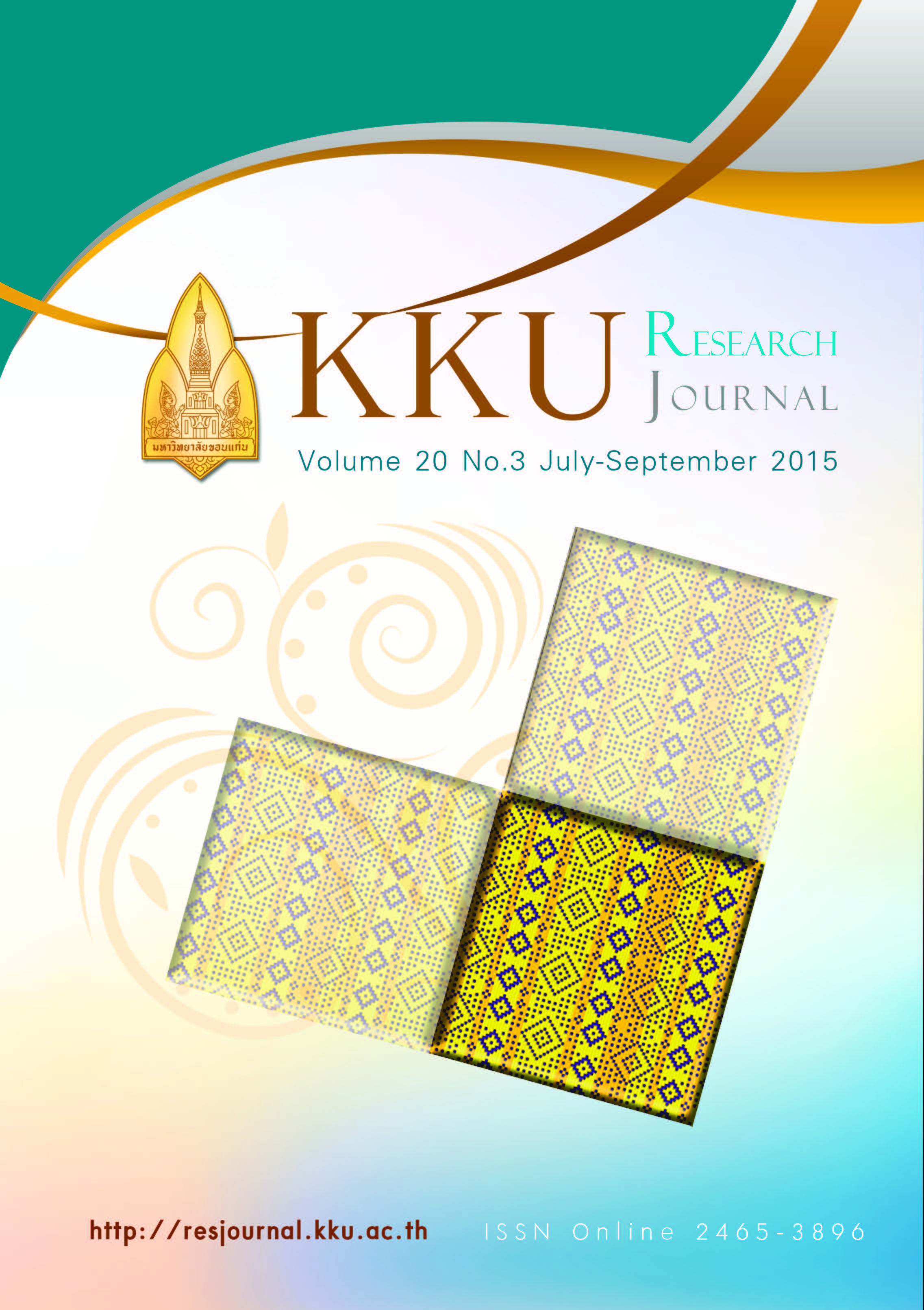Effects of temperatures on strength and deformability of Tak granite
Main Article Content
Abstract
Strength of granite under elevated temperatures is an important parameter governing the long-term stability of waste disposal boreholes. The objective of this study is to experimentally determine the effects of elevated temperatures on the compressive strengths and elasticity of Tak granite. The rock strength and deformability are determined under various temperatures and confining pressures. The confining stresses are maintained constant at 0, 3, 7, to 12 MPa using a polyaxial load frame. The rectangular block specimens have nominal dimensions of 5×5×10 cm3. The testing temperatures are varied from 273 to 773 Kelvin. The results indicate that the granite strength and elasticity exponentially decrease as the temperature increases. The distortional strain energy criterion is proposed to describe the rock strengths as a function of mean strain energy. The criterion fits well to the test results. The proposed strength criterion is useful to predict the strength and deformation of granite around waste disposal boreholes under elevated temperatures.
Article Details
References
[2] Shimada M, Liu J. Temperature dependence of strength of rock under high confining pressure, Annuals Disas. Prev. Res. Inst. 2000;43B-1:75-84.
[3] Xu X, Gao F, Shen XM, Xie HP. Mechanical characteristics and microcosmic mechanisms of granite under temperature loads. J China Univ Mining and Technol, 2008;18(3):413-417.
[4] Bergman MS. Nuclear waste disposal. Subsurf Space. 1980;2:791–1005.
[5] US Department of Energy. Statement of the position of the United States Department of Energy in the matter of rulemaking on the storage and disposal of nuclear wastes, Report DOE/NE-0007; 1980.
[6] Logan SE. Deep self-burial of radioactive wastes by rock melting capsules. Trans. Am. Nucl. Soc. Ann. Mtg. 1973;21:111-124.
[7] Heuze FE. On the geotechnical modelling of high-level nuclear waste disposal by rock melting. Lawrence Livermore National Laboratory Report UCRL-53183; 1981.
[8] Etienne FH, Houpert R. Thermally induced microcracking in granites: characterization and analysis. Int. J. Rock. Mech. Min. Sci. Geomech. 1989;26(2):125-134.
[9] Dwivedi RD, Goel RK, Prasad VVR, Amalendu S. Thermo-mechanical properties of Indian and other granites. Int. J. Rock. Mech. Min. Sci. 2008;45(3):303-315.
[10] Mahawat C, Atherton MP, Brotherton MS. The Tak Batholith, Thailand: the evolution of contrasting granite types and implications for tectonic setting. J. Southeast Asian Earth Sci. 1990;4(1):11-27.
[11] ASTM D 4543-85. Standard test method for preparing rock core specimens and determining dimen-sional and shape tolerances. Annual Book of ASTM Standards. Vol. 04.08. Philadelphia.
[12] ASTM D 3967-95. Standard test method for splitting tensile strength of intact rock core specimens. Annual Book of ASTM Standards. Vol. 04.08. Philadelphia.
[13] Fuenkajorn K, Kenkhunthod N. Influence of loading rate on deform-ability and strength of three Thai sandstones. Eng. Geol.2010;28:707-715.
[14] ASTM D3967-08. Standard test method for splitting tensile strength of intact rock core specimens. ASTM Annual Book of Standards. Vol. 04.08. West Conshohocken.
[15] Jaeger JC, Cook NGW, Zimmerman RW. Fundamentals of rock mechanics. 4th ed. Blackwell Publishing: Oxford; 2007.
[16] Hoek E, Brown ET. Underground excavations in rock, The Institution of Mining and Metallurgy, Portland Place: London; 1980.
[17] Fuenkajorn K, Phueakphum D. Effects of cyclic loading on mechanical properties of Maha Sarakham salt. Eng. Geol. 2010;112:43-52.P


